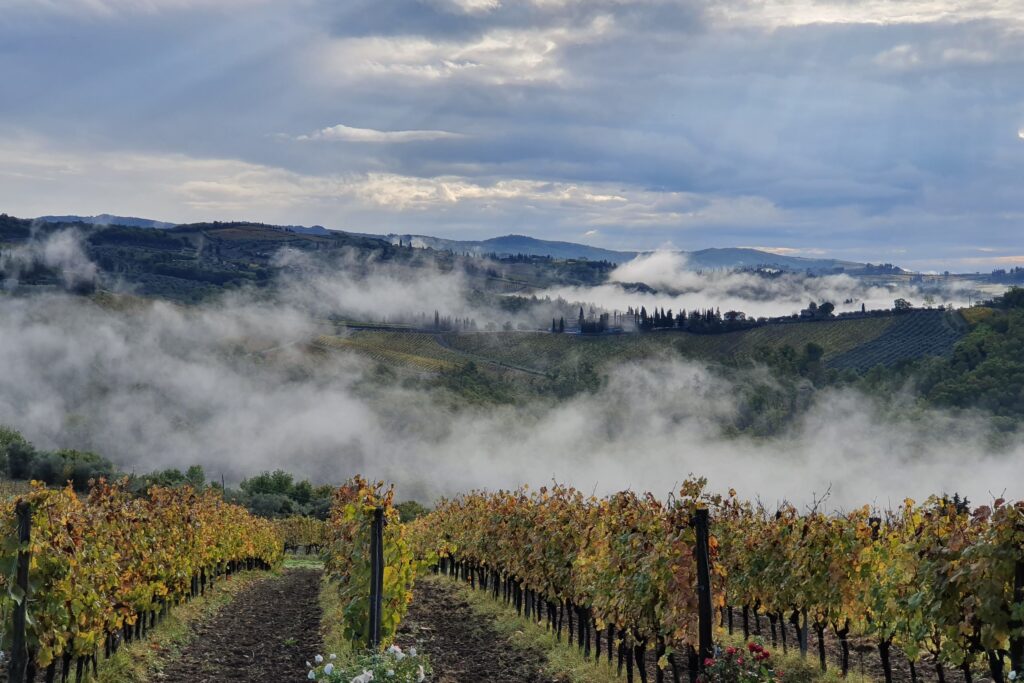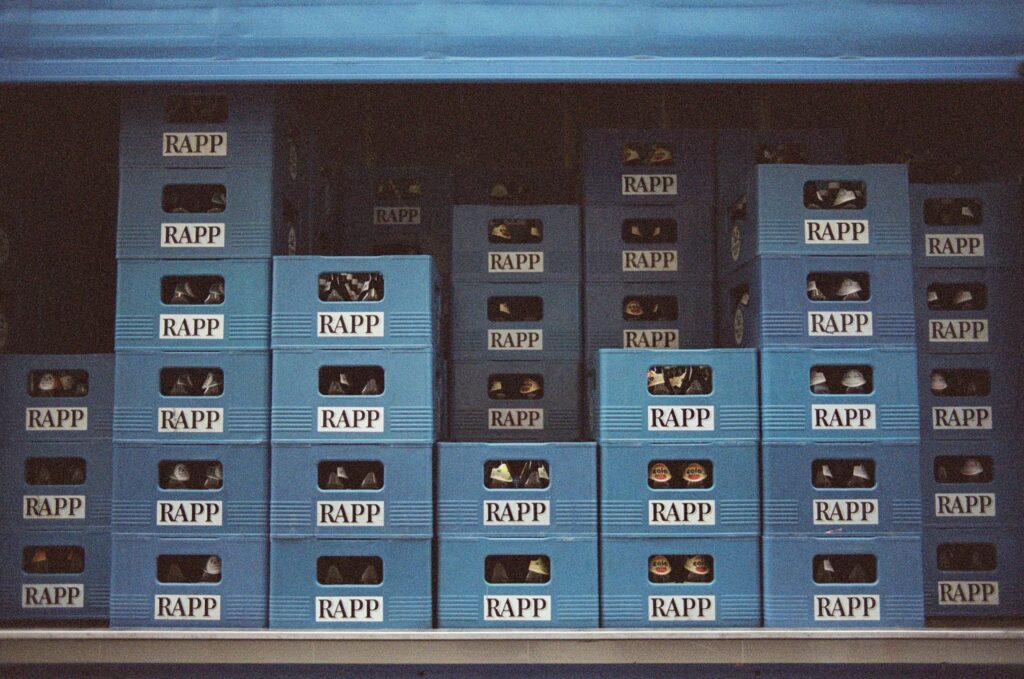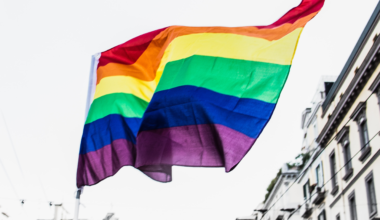Liquid courage. Booze. Hooch. Whatever you call it, we apparently love it. The global alcohol industry is worth $1,609 billion in 2023. Here in Canada, we drank our way through 3,141 million litres in 2021, an average of 9.5 alcoholic beverages per person per week. While environmental impact is probably the last thing we want to think about when enjoying a tipple, the fact of the matter is the alcohol industry is environmentally damaging and fuels our global climate crisis.
The Alcohol Industry In Canada
Established in 1786, the Molson Brewery in Montréal still stands as the oldest brewery in North America. More than 200 years later and beer is still the most popular alcoholic drink across the country, even though wine takes the top spot in Quebec and British Columbia.
Like most countries in a global society, Canada imports a large portion of its alcohol, around 450 million dollars worth each month. But we also produce our own alcohol with more than 1,200 breweries, 616 wineries and 200 distilleries across the country.
23.7 million Canadians, three quarters of the population, drink alcohol regularly earning the government $15.2 billion from alcohol sales in 2021. As high as that sounds Canada doesn’t even come close to the top 10 heaviest drinking nations coming in 52nd place behind the United States and the United Kingdom.
How The Alcohol Industry Impacts The Environment
Alcohol isn’t generally the first thing that comes to mind when you think of environmental offenders but it doesn’t just appear in your glass out of nowhere. It takes land and water resources to grow barley for beer, grapes for wine and rye for whiskey. Then it needs to be packaged and transported from where it’s been harvested and produced. Finally, it gets to you. Where after already travelling thousands of kilometers, you’ve probably had to drive another few to buy it.
The alcohol industry’s impact on the environment stems from three categories:
- Alcohol Production
- Alcohol Distribution
- Alcohol Consumption

Alcohol Production
Alcohol is a thirsty, land-hungry and toxic waste producing business impacting 14 out of 17 Sustainable Development Goals (SDGs). Agriculture is pretty damaging to the environment as it is. By clearing land and introducing chemical toxins, the agriculture industry is one of the biggest threats to biodiversity, impacting 85% of species threatened with extinction. But we need food. We have a growing global population and 828 million people around the world already suffering from food scarcity. So does it make sense to use our farm lands to grow crops for a non essential, nutrient deficient product like alcohol when we could grow more nutrient and calorie dense foods like fonio or breadfruit.
And then there’s water use. As it stands 1.1 million people today don’t have access to water worldwide, but a considerable amount is used for alcohol production. It takes 148 litres of water to produce one bottle of beer. In drought stricken areas like Northern Mexico, residents go without water while the beer industry increases their output and drains water supplies.
In the spirit sector almost all water used is wasted and in some cases even toxic. Run-off from rum distillation contains molasses and cane juice, disrupting ecosystems in the area. In Mexico, every litre of tequila produces 5 kilos of pulp and 11 litres of acidic waste that contaminates the surrounding soil and water.
Wine doesn’t get off scot-free in terms of water usage either, in fact its water footprint is three times larger than beer’s. Vineyards also negatively impact soil, leaching and leaving behind chromium copper arsenate.

Alcohol Distribution
While small craft breweries and distilleries have us drinking more local alcohol, we still ship billions units of alcohol around the world each month. Want some tequila? Better get it from Mexico. Want to celebrate with Champagne? It needs to come from France. Want to sip on some Irish Cream liquor? It has to come from Ireland. In a world where geographical indications matter, we’ve created an industry that’s damaging to the environment in its requirement to travel.
Transportation accounts for between 6-16% of alcohol’s carbon footprint, about 185 g CO2 eq per 750 ml bottle. Between air, land and sea alcohol is an energy intensive and pollution generating product to ship around the world every day.
And then there’s the question of what it’s packaged in. Whether it’s a glass bottle or carton, packaging accounts for almost half of alcohol’s environmental impact. Glass in particular requires extremely high heat to produce and if it’s not recycled after use takes 1 million years to break down in a landfill.

Alcohol Consumption
Most of us aren’t out here purposefully making decisions to harm the environment. In fact, according to a recent study 49% of consumers now consider sustainability when buying food and drink. This extends to the alcohol industry with 48-70% of alcohol drinkers globally being positively influenced to purchase by a company’s sustainability initiatives. But this assumes we’re not being misled by companies using greenwashing techniques to appear more sustainable than they actually are. Greenwashing in the alcohol industry comes into play when a brand partners with a charitable organisation or cause but still uses harmful production methods or wasteful sourcing and packaging. Unfortunately as a consumer you have to look beyond the label to really know if a company is sustainable or not.
There’s already been a few cases in the food and drink industry of brands misleading consumers on the recyclability of their packaging. Lets not forget the Keurig case of 2022 when the City of Toronto had to divert 90 tonnes of plastic pods from recycling bins because the pods were incorrectly labeled as recyclable. Technically you could recycle them, but only if you lived in British Columbia or Quebec.
Canada’s deposit return program helps keep alcoholic containers out of landfills, about 1.1 million tonnes and three million alcohol containers were diverted between 2007-2017 in Ontario alone. But that doesn’t account for all alcohol containers, 80 million alcohol bottles actually end up in Ontario landfills every year. And it certainly doesn’t account for countries across the globe without recycling incentive initiatives like Canada.
How To Drink Alcohol Sustainably
1. Support Local, Sustainable Breweries, Distilleries and Vineyards
Alcohol isn’t the most eco-friendly industry but some producers are aiming to reduce their environmental impact as much as possible and in some cases even make a net positive impact. Supporting local sustainable breweries, distilleries and vineyards help to keep travel miles low, contributes to a more eco-friendly industry and overall healthier local ecosystems.
Canada’s Northern Keep and Vodkow vodkas both focus on sustainable production methods. Ontario’s first vegan winery Karlo Estates Winery uses only plant and clay based products during production, supporting animal friendly as well as eco-friendly practices.
2. Recycle Your Empties
If you live in Canada, remember to wash and return your containers to your provincial beer or liquor store. For other areas, check your local recycling rules and facilities to see what and how to recycle your empties.
3. Use Refillable Containers
One of the extra perks of buying your beer at a brewery or wine at a winery is the handy reusable growler or carafe you get with your purchase. Once you’re finished with your drink, you can bring it back for a refill, saving bottles and unnecessary packaging from landfills in the process.
Sustayn is designed to present the most useful recommendations for environmentally friendly approaches and items. We update links when possible, but note that links can be broken and subject to change.








